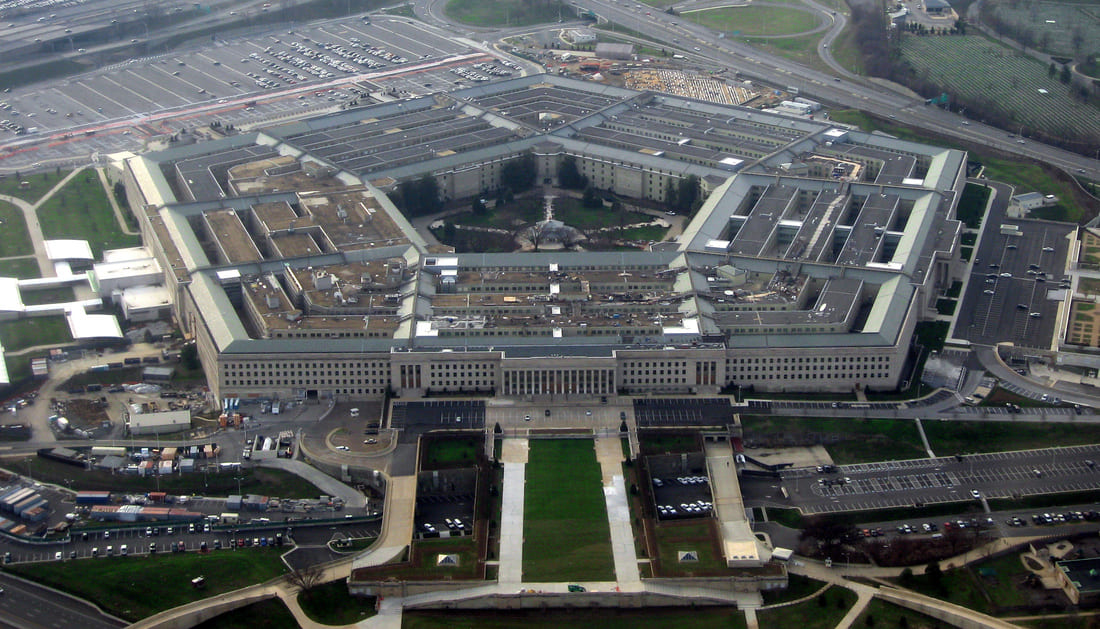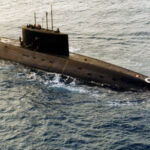The Pentagon’s testing watchdog has pared its official oversight list to 152 programs – down from 251 last year. Defense officials confirm the update removed operational test oversight for several efforts and limited review of others to narrower tasks. The timing matches late July documentation and an early August public release. The independent office no longer oversees operational testing of the XM7 – the Army’s new rifle.
Public listings show a different mix of responsibilities than a year ago. The office still marks programs for live-fire review and for developmental engagement, yet far fewer get the independent operational test check that once acted as the final gate before large-scale fielding.
The new list shows “Next Generation Squad Weapons, Weapons and Ammunition Rapid Fielding” checked only for live-fire oversight, not for developmental or operational testing. That entry covers the rifle and its 6.8×51 mm ammunition family.
Program counts in recent budget and annual reports have hovered above two hundred for years. The drop to 152 marks a sharp policy turn.
Industry sources report that several Navy undersea weapons and other munitions now receive reduced attention at the operational stage while still keeping live-fire review. Service test agencies will continue to run their own trials but the outside oversight layer has thinned.
XM7 rifle removed from operational testing oversight
Greg Williams, who directs the Center for Defense Information at a nonpartisan watchdog, called the XM7 change “by far the most alarming omission.” He compared the Army’s switch to the XM7 to the early M16 rollout and warned against repeating old mistakes. “The XM7 rifle is by far the most prominent program that we saw drop through the list,” he said. Williams pointed to torpedoes receiving less independent scrutiny, though he kept the XM7 front and center.
Congress created the independent test office after the M16’s early combat failures. The office’s mandate is simple on paper. It approves test-and-evaluation master plans, verifies whether trials match those plans, and reports findings to lawmakers. It does this across three buckets of testing: developmental, operational, and live-fire. When the independent layer steps back from operational test, the office no longer certifies whether a system proved itself in realistic field conditions before production ramps.
Williams argues the XM7 needs both developmental and operational checks. Hitting a paper target on a range won’t tell leaders how the rifle holds up with mud, heat, cold, new optics and tactics.
“Simply shooting it at a target and assessing whether or not it hits is not enough to assess that this weapon is ready for combat,” he said, adding the new weapon asks for “a significant change in the tactics by which it’s employed.” He drew a clear line between live-fire and operational testing, stressing they aren’t interchangeable. The current oversight list backs up that point, since it tags the rifle’s program set for live-fire only.
Army units have already begun fielding limited quantities under rapid-fielding authorities, while broader adoption remains under review. The office’s shift removes one independent choke point that once forced difficult reliability questions in combat-like trials.
Workforce reductions and contractor elimination at DOT&E
In May, Defense Secretary Pete Hegseth ordered a steep workforce cut at the Director of Operational Test and Evaluation. The office went from 94 employees to a structure built around 30 civilians, 15 military personnel and a single senior leader. Contractor support ended outright.
Hegseth framed the change as a response to an internal review that flagged non-statutory functions and duplicative roles. He said the reorganization would save more than $300 million each year and speed delivery of systems to the field.
Staffing shortfalls underpin the new oversight list. With fewer analysts, there are fewer plans to approve, fewer test events to observe and fewer reports to produce. The office manages programs from submarines and bombers to radios, missiles and protective gear. Each program demands technical expertise, travel and time. The leaner staff focuses on statutory duties, prioritizes live-fire reviews and returns much of the operational work to the services.
Defense officials report that the department this summer tightened rules on outside consulting and pushed insourcing, narrowing contractor roles that once supported test teams.
Reactions landed in two camps. Supporters of the cuts argue the services own most of the test burden anyway and that faster fielding requires fewer checkpoints. They note the office can still step in on select programs under law and report to Congress when needed.
Opponents counter that the independent layer prevents expensive do-overs and protects troops from avoidable failures. Several former test officials say independence matters most when schedules tighten and production money looms, since that is when pressure to waive trials tends to spike. The two sides agree on one hard fact, the office can now do less with fewer people.
Senate scrutiny and proposed legislative fixes to restore oversight
The Senate Armed Services Committee examined the office’s future during a July hearing for Amy Henninger, nominated to lead DOT&E. Sen. Elizabeth Warren pressed Henninger on whether she would continue honoring congressional requests to add specific programs to the oversight list. Henninger said she would review all suggestions and analyze what belongs on the list, but stopped short of a clear commitment to accept every such request.
The committee’s official notice sets the hearing date and names the portfolio under review. Written submissions around the hearing back proposals to combine developmental and operational testing, broaden digital tools and engage programs earlier.
Senators pressed the nominee on how to preserve that independence amid the reorganization and reduced staff. The record so far offers no clear answer.
Williams highlighted the timing of the public release for the new oversight list, which landed a week after the hearing while Congress left town for recess. He urged the Senate to secure a firm pledge from the nominee to honor oversight requests from committees of jurisdiction. He called on Congress to restore funding, billets and contractor support once the office has a confirmed leader.
Rep. Donald Norcross introduced language in the fiscal 2026 defense policy bill to expand the testing office’s authorities and resources. The House package moved before the August break, and committee summaries describe several oversight-related items alongside other reforms.
Recent annual reports say the office approves test plans, reviews results and reports to Congress. Policy issued in late 2024 reaffirms independent operational and live-fire reporting for acquisition decisions on the oversight list. A Defense Science Board study last year described the list as a joint product that identifies programs under developmental engagement and those under operational and live-fire oversight.
Our analysis shows the current oversight list – dated July 31 and cleared for public release on August 7 – places multiple high-visibility programs under live-fire review only, including the Next Generation Squad Weapons effort that underpins XM7.
What the change means for programs now under limited review
The office doesn’t run every test. It sets the bar, checks whether the services meet it, and tells Congress what the results mean for combat use. When the bar moves, the services take on more of the work. That can hold for mature systems and well-funded test agencies. It gets tougher with new weapons, unfamiliar tactics, heavy logistics, or fast fielding goals.
In practical terms, program managers now face a leaner independent review at key decisions. Test and Evaluation Master Plans will still exist, but fewer will get deep outside study before approval. For operational assessments, service test agencies carry more weight without the same level of independent cross-check. Live-fire trials stay with the office, which matters for survivability and lethality, but they can’t replace field trainings that stress reliability, maintainability and unit training.
XM7 brings a new caliber, new recoil patterns and a heavier load for dismounted troops. It pairs with a new fire-control optic and novel ammunition. Range accuracy and ballistic gel tests answer some questions. They don’t show how squads adapt to the weight, how suppressors hold up on long patrols, or how parts wear when dust and cold meet rapid fire. Service testers run those events. The independent layer once buffered program optimism from field judgment. With that buffer thinner, leadership will lean more on internal reports when it decides on broad issue.
Navy programs face a similar squeeze. Several torpedo lines and undersea systems now sit under reduced independent operational review. Submarine crews and ranges run complex trials with real safety and classification hurdles. Live-fire oversight continues, covering warheads and survivability. Finding operational edge cases often takes repeat, realistic events and outside analysts who can press for extra runs when the data looks thin. With less bandwidth at the independent office, the push for those cycles narrows.
Acquisition executives can still request independent involvement for specific cases, and congressional committees can ask the office to add programs. Whether a leaner organization can absorb many such additions remains unclear.
Pentagon leaders argue the restructure saves money and cuts bureaucracy that slows delivery. Supporters inside the department think service test agencies, backed by modern digital tools, can take on more early risk and catch issues sooner. Skeptics warn about the cost of late fixes when realism arrives only after units field new gear.
Officials confirm that the oversight list will be updated on a rolling basis. The public version posted in August anchors where things stand today. Any changes from a confirmed director, fresh guidance, or new law will show up there first.
REFERENCE SOURCES
- https://armedservices.house.gov/ndaa/fy26-ndaa-resources.htm
- https://federalnewsnetwork.com/defense-news/2025/08/dods-independent-testing-office-drops-nearly-100-programs-from-oversight-list/
- https://www.dote.osd.mil/Oversight/
- https://www.dote.osd.mil/Portals/97/pub/reports/oversight/TE%20Oversight%20List%2020250731%20www%20extract.pdf
- https://www.dote.osd.mil/Portals/97/pub/reports/FY2024/appendix/2024oversight-list.pdf
- https://defensescoop.com/2025/05/28/hegseth-restructure-odote-test-evaluation-office-workforce/
- https://www.defense.gov/News/Releases/Release/article/4199402/statement-by-chief-pentagon-spokesman-and-senior-advisor-sean-parnell-on-reorga/
- https://www.warren.senate.gov/newsroom/press-releases/icymi-at-hearing-nominee-to-lead-weapons-testing-office-commits-to-exposing-the-truth-about-whether-weapons-work-and-are-safe-but-wont-commit-to-reviewing-weapons-and-programs-flagged-by-congress
- https://www.armed-services.senate.gov/hearings/to-consider-the-nominations-of_mr-michael-t-powers-to-be-deputy-under-secretary-of-defense-comptroller–dr-amy-e-henninger-to-be-director-of-operational-test-and-evaluation–department-of-defense—mr-david-w-denton-jr-to-be-general-counsel-of-the-department-of-the-navy-and–mr-benjamin-c-kohlmann-to-be-assistant-secretary-of-the-navy–for-manpower-and-reserve-affairs
- https://www.pogo.org/analysis/pentagon-cuts-to-dot-e-could-endanger-troops



